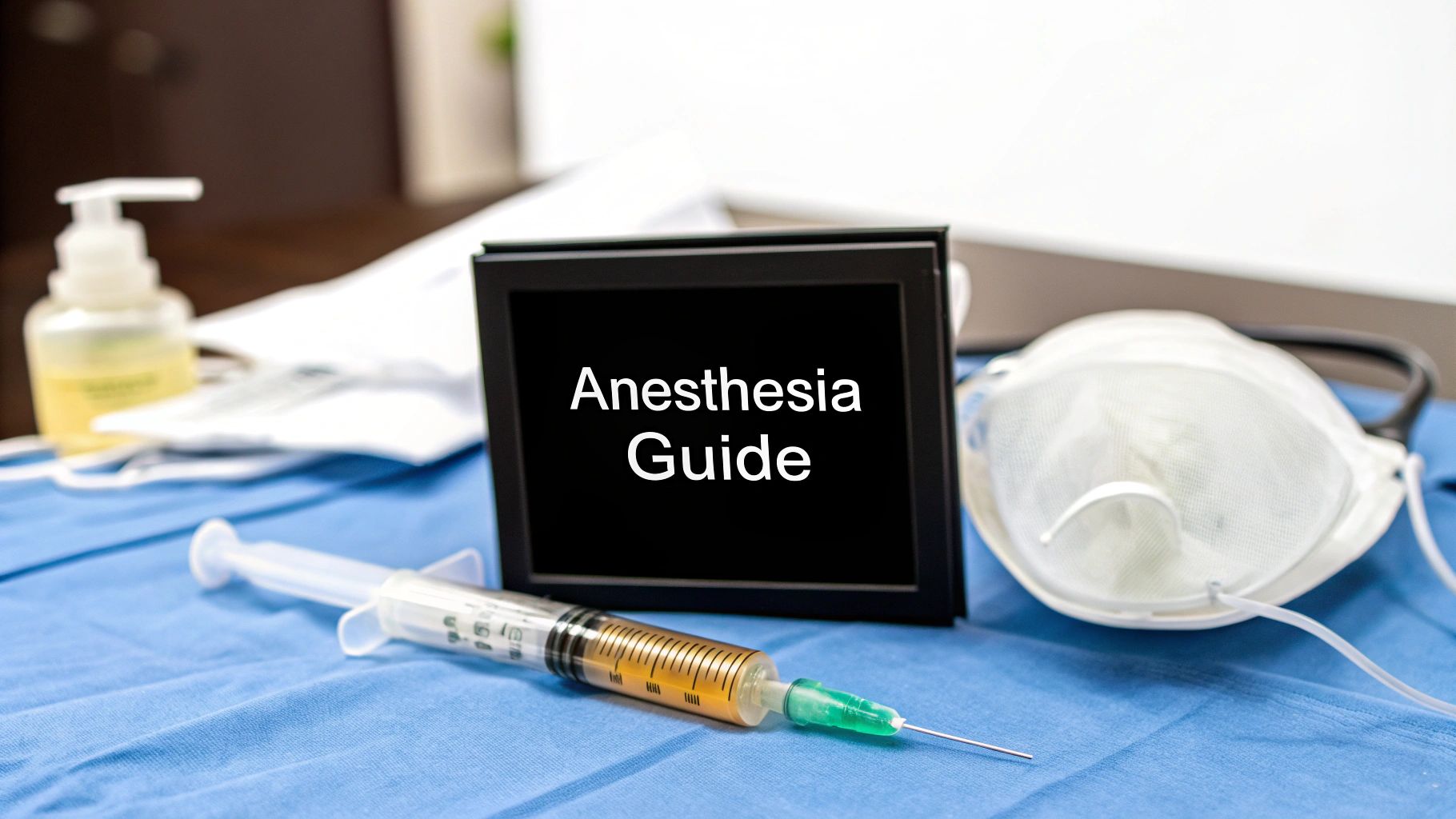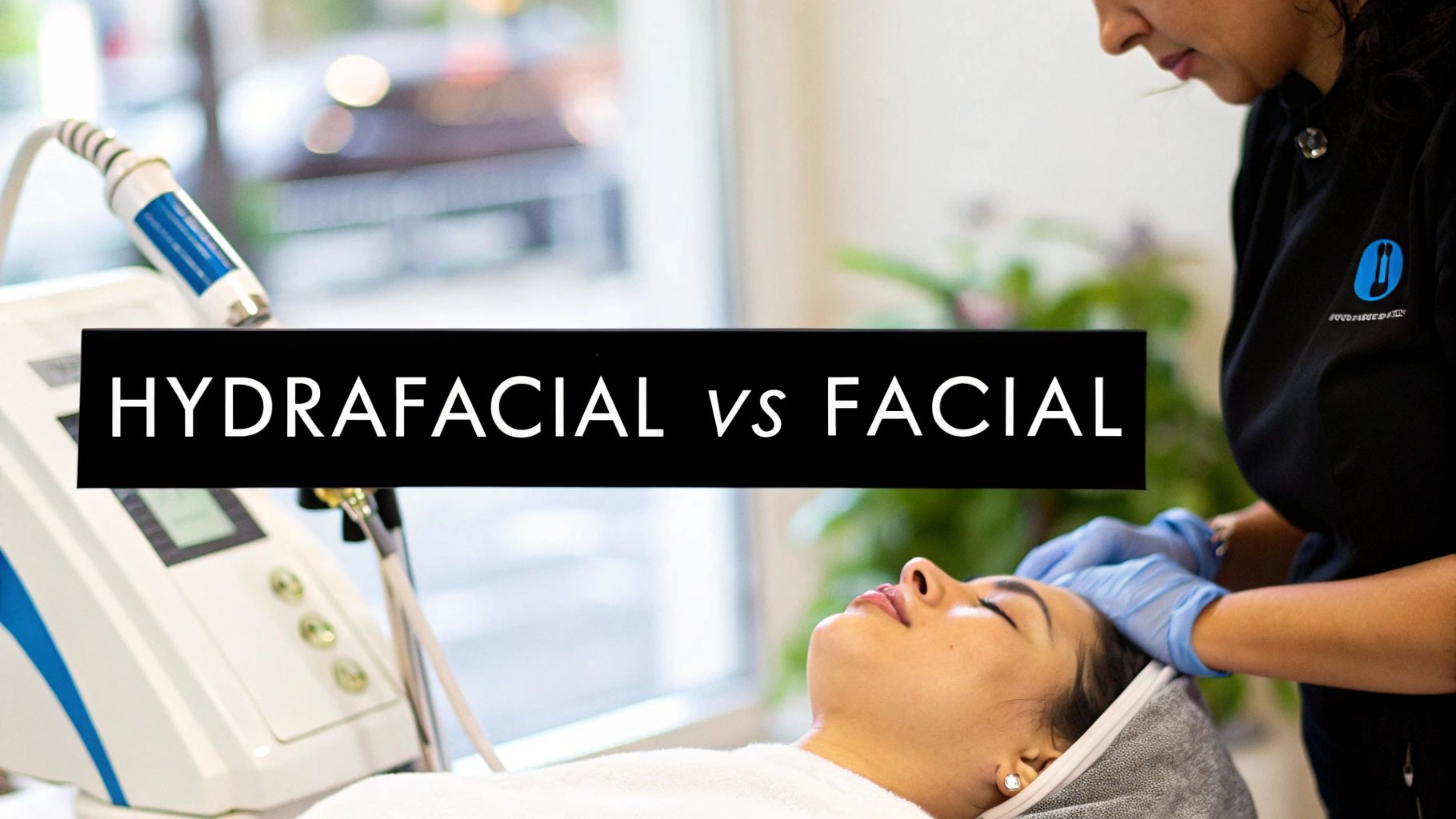
October 12, 2025
Anesthesia Types for Surgery A Patient's Guide
Discover the main anesthesia types for surgery. This guide explains general, regional, local, and sedation to help you prepare for your procedure.
Aug 24, 2025

Scars—whether from acne, surgery, injury, or burns—can leave lasting physical and emotional marks. Scar revision surgery presents an opportunity not just to enhance the appearance of scars but to restore confidence, improve functionality, and uplift emotional wellbeing. This article explores how advances in scar revision techniques, personalized care, and thoughtful aftercare converge to help patients reclaim comfort with their skin and themselves.

Scar revision surgery provides multiple advantages that extend beyond just improving appearance. One of the main benefits is the enhancement of the scar’s look, where techniques are used to reduce visibility, color mismatch, size, and texture disparities, creating a more natural and harmonious skin surface.
Functionality can also be improved, particularly in cases where scars cause stiffness or restrict movement, with options like Z-plasty or skin grafting designed to release adhesions and restore mobility.
Beyond physical changes, the procedure can alleviate symptoms such as itching, pain, or irritation that often accompany thick or raised scars. This alleviation contributes to increased comfort in daily life.
Psychologically, scar revision can significantly boost self-esteem and confidence. When scars are prominent on facial or visible areas, lessening their prominence can lead to positive changes in social interactions and overall emotional well-being.
In summary, scar revision helps improve both the aesthetic appearance and functional aspects of scars, leading to a better quality of life.
Various scars can be treated effectively with revision techniques, each tailored to the specific scar type and its characteristics. Hypertrophic and keloid scars are raised and may extend beyond the original injury site; these are often treated with steroid injections, laser therapy, or surgical removal.
Atrophic scars, characterized by sunken or pitted areas (commonly from acne or chickenpox), respond well to dermal fillers, laser resurfacing, or chemical peels to restore volume and smoothness.
Contracture scars, typical after burn injuries, involve tightening of the skin that can impair movement. Treatment might include skin grafts, tissue expansion, or release surgeries to improve both appearance and function.
Overall, the goal of scar revision is not always complete removal but to improve the scar's appearance, texture, and function, making scars less noticeable and more comfortable.
| Scar Type | Treatment Options | Purpose | Additional Notes |
|---|---|---|---|
| Hypertrophic | Steroid injections, surgery, laser | Reduce size and redness | Usually raised within original injury boundary |
| Keloid | Steroid injections, cryotherapy, laser, surgery | Flatten and reduce growth | Extends beyond original injury |
| Atrophic | Fillers, laser, chemical peel | Smooth out uneven skin | Sunken scars from acne or injury |
| Contracture | Grafts, tissue expansion, release | Restore mobility | Common after burns |
| Traumatic/Surgical | Excision, laser, dermabrasion | Improve appearance and function | Depends on scar location and severity |
This tailored approach ensures that each scar receives the most appropriate treatment to achieve optimal aesthetic and functional results.
 Scar revision surgery offers a range of techniques tailored to improve the appearance and function of scars. The process begins with an assessment of the scar type, location, and severity to determine the most suitable approach.
Scar revision surgery offers a range of techniques tailored to improve the appearance and function of scars. The process begins with an assessment of the scar type, location, and severity to determine the most suitable approach.
Surgical Procedures include scar excision, where the scar tissue is carefully removed, and the skin is rejoined using layered suturing techniques such as fusiform, Z-plasty, or W-plasty. These methods help to align scars with natural skin tension lines, making them less noticeable. For scars causing tightness or limiting movement, procedures like tissue expansion or flap surgery may be used to replace or cover the scarred tissue.
Non-Surgical Treatments encompass laser therapy, dermabrasion, and chemical peels, which refine the skin's surface, reduce pigmentation, and improve texture. Laser therapy involves using focused light to break down scar tissue, stimulate collagen production, and promote regeneration. Dermabrasion gently removes the top skin layer to smooth irregularities, while chemical peels speed up skin renewal.
Injectable options, such as corticosteroid injections, help flatten hypertrophic or keloid scars by reducing inflammation and excess tissue. Dermal fillers can restore volume to atrophic scars like those caused by acne or chickenpox, improving their appearance.
Personalized Treatment Plans are essential, as each scar is unique. Surgeons consider factors such as scar type, location, skin characteristics, and patient expectations. A tailored plan might involve combining several techniques—for example, laser therapy followed by filler injections—to achieve optimal results. For more extensive scars, skin grafts, tissue expansion, and flap procedures are employed to replace damaged tissue with healthy skin.
This comprehensive approach ensures not only aesthetic enhancement but also functional improvements, such as increased mobility in scars causing restrictions. Proper post-treatment care and follow-up are important to maximize healing and longevity of results.
| Technique | Purpose | Additional Details |
|---|---|---|
| Surgical excision | Remove or revise the scar | Often used for raised or stubborn scars |
| Layered closure | Minimize scar visibility | Techniques include Z-plasty and W-plasty |
| Laser therapy | Reduce scar's surface irregularities and pigmentation | Stimulates collagen, improves surface texture |
| Dermabrasion | Refine skin surface | Removes outer skin layer to smooth irregularities |
| Chemical peels | Improve skin surface and color | Accelerates skin renewal |
| Corticosteroid injections | Flatten hypertrophic and keloid scars | Reduces inflammation and excess tissue |
| Dermal fillers | Restore volume to atrophic scars | Creates a smoother surface |
| Skin grafts, Flaps | Cover extensive tissue loss | Used in complex or large scars |
Choosing the right combination of procedures depends on individual scar characteristics and personal goals. Consulting with experienced specialists ensures a customized approach that balances aesthetic and functional benefits.

Candidates for scar revision surgery are generally individuals with scars that have matured, typically being at least 12 to 18 months old. This maturity allows the scar tissue to stabilize, providing a better baseline for surgical improvement and reducing the risk of recurrence.
To be suitable, patients should be in good overall health. This includes the absence of active skin infections, uncontrolled skin conditions, or medical issues such as diabetes or immune system suppression, which can affect healing.
Realistic expectations are crucial. Candidates should understand that while scar revision can significantly improve the appearance and texture of scars, it may not completely erase them. The goal is to blend and camouflage, making scars less noticeable.
Lifestyle factors also matter. Patients should avoid smoking before and after surgery, as tobacco use can impair healing and increase complication risks. During consultation, surgeons assess the scar's characteristics, location, and the patient's health history to determine suitability.
A comprehensive evaluation by a board-certified facial plastic or plastic surgeon is essential. This evaluation ensures the procedure aligns with the individual's specific needs and that they fully understand potential outcomes, risks, and recovery demands.
In summary, ideal candidates are those looking for aesthetic or functional improvements, in good health, with mature scars, and who hold realistic hopes for the results.
For further information about candidacy, search using "Scar revision surgery candidacy criteria and patient selection."

The journey of scar revision begins with a detailed consultation, during which the surgeon evaluates the scar, discusses potential treatment options, and reviews the patient's overall health. Based on the scar's characteristics—such as type, size, and location—various techniques like excision, laser therapy, dermabrasion, or skin grafting may be employed. The procedure can be performed under local or general anesthesia, depending on its complexity. Post-surgery, the incisions are carefully closed with sutures, and patients enter a structured recovery phase. This phase involves keeping the area dry, protecting it from sun exposure, and minimizing tension on the incision. Patients are usually advised to follow specific care instructions to support optimal healing, which can span several months. As the scar matures—typically over 12 to 18 months—the appearance continues to improve. Regular follow-up appointments are essential to monitor recovery, manage any complications, and initiate additional treatments if necessary. Patience and consistent care are crucial for achieving the best long-term results.
Proper aftercare is vital in ensuring a smooth recovery and minimizing scar visibility. Postoperative routines include keeping the incision clean and dry, avoiding submersion in water for about 4-6 weeks, and refraining from applying lotions, makeup, or sunscreens unless instructed by the surgeon. Sun protection plays a major role; scars are particularly susceptible to pigmentation changes from UV radiation. Patients should use a high-SPF sunblock and wear protective clothing for at least a year after surgery. Topical treatments like silicone gels or sheets may be recommended to reduce scar prominence, and gentle massage of the scar area can be initiated after 2-3 weeks to improve texture and elasticity. Avoidance of strenuous activities and keeping the area elevated can promote better healing. Regular follow-up appointments are essential to address any concerns early and adjust care plans as needed. Adhering to these guidelines helps in reducing complications and enhances the aesthetic and functional outcomes of the scar revision.
Most patients experience significant satisfaction with their scar revision results. Studies show that approximately 82% of patients report noticeable improvements in their scars. Satisfaction tends to be higher when scars are aligned parallel to Relaxed Skin Tension Lines, with up to 83% of patients expressing contentment. Patients with scars from trauma or injury often report higher satisfaction—around 91.8%—compared to other causes. Women tend to be more pleased with their results than men, which may be linked to differing aesthetic expectations. Functional improvements—such as increased mobility or decreased discomfort—are also significant factors influencing satisfaction. Overall, success in scar revision depends on careful surgical planning, patient selection, and adherence to post-treatment care. With proper management, many patients enjoy lasting, positive changes that boost their confidence and improve their quality of life.

Scar revision surgery can have a profound effect on emotional health by substantially improving the appearance of scars, especially those in visible areas like the face. Since visible scars often carry social stigma and can cause feelings of shame, their reduction or removal can boost self-confidence and reduce social anxiety.
When scars are less noticeable, individuals often feel more comfortable in daily social and professional interactions. This can lead to increased participation in activities that might have previously caused embarrassment or hesitation.
Beyond aesthetics, scar revision can help individuals feel more at peace with their image, alleviating feelings of trauma, shame, or self-consciousness related to past injuries or skin conditions. Such improvements can support a more positive body image and promote mental resilience.
While surgical procedures are effective at addressing physical concerns, combining these treatments with psychological support such as counseling can amplify benefits, helping individuals process emotional impacts and build self-esteem.
Overall, scar revision surgery is not just about skin correction; it can serve as a crucial step toward regenerating confidence, enhancing social engagement, and improving overall mental health, leading to a better quality of life.
Scar revision surgery offers more than just cosmetic enhancement—it is a holistic approach to healing that embraces the physical, emotional, and psychological challenges scars impose. By leveraging advanced, personalized techniques suited to each unique scar and patient, these procedures restore not only skin aesthetics but also function and self-esteem. Patients can expect a thoughtful treatment journey complemented by attentive aftercare and meaningful improvements in quality of life. For those affected by visible or uncomfortable scars, scar revision provides a hopeful path toward renewed confidence and a positive self-image through compassionate care and expert surgical artistry.

October 12, 2025
Discover the main anesthesia types for surgery. This guide explains general, regional, local, and sedation to help you prepare for your procedure.

October 11, 2025
Learn the key differences between hydrafacial vs regular facial to choose the right treatment for glowing, healthy skin. Read our expert guide now!

October 10, 2025
Explore the best treatments for sagging skin, from non-invasive to surgical options. Find the perfect solution to restore your youthful appearance.